Evaluating Age-Friendliness of Outdoor Service Facilities in Tourist Attractions: Evidence from Visual Computing Models
Abstract
:1. Introduction
2. Literature Review
2.1. Evaluation Methods for Age-Friendliness in Tourist Attractions
2.2. Current Research Status of Computer Vision
3. Methods
3.1. Study Area and Research Framework
3.2. Analysis of the Utilization of Rest Area Service Facilities and Visitor Age in Tourist Attractions
- (1)
- The center point of the visitor’s character frame needed to be located within the range of the set service facilities.
- (2)
- The height-to-width ratio of the visitor’s frame had to be less than 2.5 times. A character frame with a height-to-width ratio greater than 2.5 was considered to be a person passing by the service facility and was excluded. The method of judging the utilization of service facilities in scenic open spaces is shown in Figure 4.
3.3. Assessment of Aging-Friendly Adequacy Rate of Rest Facilities
4. Results
4.1. Usage of Service Facilities and Visitor Age Recognition Results
4.2. Analysis of Aging-Friendly Adequacy Rate of Rest Facilities
4.3. Verification of Results
4.3.1. Multi-Period Monitoring and Verification
4.3.2. Validation Analysis Based on Online Reviews
4.4. Optimization Analysis of Rest Facility Layout
5. Discussion
5.1. Comparison with Prior Work
5.2. Limitation
5.3. Future Works
6. Conclusions
Author Contributions
Funding
Institutional Review Board Statement
Informed Consent Statement
Data Availability Statement
Conflicts of Interest
References
- The Report on the Progress of Strengthening and Advancing Aging Work by the State Council. National People’s Congress of China. Available online: http://www.npc.gov.cn/npc/c2/c30834/202208/t20220831_319086.html (accessed on 6 April 2025).
- Alley, D.; Liebig, P.; Pynoos, J.; Banerjee, T.; Choi, I.H. Creating Elder-Friendly Communities. J. Gerontol. Soc. Work 2007, 49, 1–18. [Google Scholar] [CrossRef] [PubMed]
- Lim, H.-J.; Nam, S.-W.; Lee, P.S.-H. A Study on the Development of Elderly-Friendly Parks in Accordance with Demographic Change: Parks in Seoul. J. Humanit. Soc. Sci. Res. 2023, 31, 344–363. [Google Scholar] [CrossRef]
- Chen, X.; Liu, W.; Yang, C. Research on the influence of urban park built environment elements on the activities of the elderly. South Archit. 2022, 12, 93–103. [Google Scholar]
- Lee, C.-F. An Investigation of Factors Determining Destination Satisfaction and Travel Frequency of Senior Travelers. J. Qual. Assur. Hosp. Tour. 2016, 17, 471–495. [Google Scholar] [CrossRef]
- Liew, S.L.; Hussin, S.R.; Abdullah, N.H. Attributes of Senior-Friendly Tourism Destinations for Current and Future Senior Tourists: An Importance-Performance Analysis Approach. Sage Open 2021, 11, 215824402199865. [Google Scholar] [CrossRef]
- Lee, C.-F.; King, B. Determinants of attractiveness for a seniors-friendly destination: A hierarchical approach. Curr. Issues Tour. 2016, 22, 71–90. [Google Scholar] [CrossRef]
- Xie, B.; An, Z.; Zheng, Y.; Li, Z. Healthy aging with parks: Association between park accessibility and the health status of older adults in urban China. Sustain. Cities Soc. 2018, 43, 476–486. [Google Scholar] [CrossRef]
- Heo, C.U.; Kim, J.-D. Relationship between the frequency of leisure facility utilization and leisure satisfaction in the senior age group. Int. J. Tour. Hosp. Res. 2019, 33, 137–156. [Google Scholar] [CrossRef]
- Kim, J.-Y.; Jeong, S. An Empirical Study on Improvement of Age-friendly Park through IPA Analysis—Focusing on the Osolgil Neighborhood Park, Yangcheon-gu, Seoul. J. Urban Des. Inst. Korea Urban Des. 2021, 22, 47–65. [Google Scholar] [CrossRef]
- Yu, W.; Sun, B.; Hu, H. Sustainable Development Research on the Spatial Differences in the Elderly Suitability of Shanghai Urban Parks. Sustainability 2019, 11, 6521. [Google Scholar] [CrossRef]
- Yu, W.; Hu, H.; Sun, B. Elderly Suitability of Park Recreational Space Layout Based on Visual Landscape Evaluation. Sustainability 2021, 13, 6443. [Google Scholar] [CrossRef]
- Kuprashevich, M.; Tolstykh, I. MiVOLO: Multi-Input Transformer for Age and Gender Estimation; Lecture Notes in Computer Science; Springer: Berlin/Heidelberg, Germany, 2024; pp. 212–226. [Google Scholar] [CrossRef]
- Ding, L.; Liang, Y.Z. Cloud computing and Internet of Things in the evaluation of ecological environment quality in rural tourist areas in smart cities. Mobile Inf. Syst. 2021, 2021, 6295568. [Google Scholar] [CrossRef]
- Yang, W.; Nan, J.; Sun, D.Z. An online water quality monitoring and management system developed for the Liming River basin in Daqing, China. J. Environ. Manag. 2008, 88, 318–325. [Google Scholar] [CrossRef] [PubMed]
- Yang, Z.Y.; Wen, J.; Huang, K.D. A method of pedestrian flow monitoring based on received signal strength. Eurasip J. Wirel. Commun. Netw. 2022, 2022, 2. [Google Scholar] [CrossRef]
- Provost, D.A.; Swenson, J.N.; Grosser, A.T. Design of a performance monitoring system for an innovative geotechnical slope stabilization design-build project. Eng. Monit. Manag. Geotech. Infrastruct. 2020, 316, 50–59. [Google Scholar] [CrossRef]
- Mu, R.; Zeng, X. A Review of Deep Learning Research. KSII Trans. Internet Inf. Syst. 2019, 13, 1738–1764. [Google Scholar] [CrossRef]
- Liu, Y.; Cheng, Y.; Wang, W. A Survey of the Application of Deep Learning in Computer Vision. In Proceedings of the Global Intelligent Industry Conference 2018, Guimarães, Portugal, 21–23 November 2018. [Google Scholar]
- Matsuzaka, Y.; Yashiro, R. AI-Based Computer Vision Techniques and Expert Systems. AI 2023, 4, 289–302. [Google Scholar] [CrossRef]
- Li, B.; Huang, Y.; Lan, G.; Li, T.; Lu, T.; Yao, M.; Luo, Y.; Li, B.; Qian, Y.; Gao, Y. Research on intelligent scenic security early warning platform based on high resolution image: Real scene linkage and real-time LBS. Proc. SPIE Int. Soc. Opt. Eng. 2015, 9808, 98083M. [Google Scholar] [CrossRef]
- Cheng, J.; Li, Q. Integrated Architecture Model of Tourism Information Service in Smart Scenic Spots Based on Hybrid Cloud. Sci. Program. 2021, 2021, 1–15. [Google Scholar] [CrossRef]
- Liu, J.; Wu, G.; Liu, Y. Early warning on safety risk of highly aggregated tourist crowds based on VGGT-Count network model. PLoS ONE 2024, 19, e0299950. [Google Scholar] [CrossRef]
- Song, Z.; Lu, J. Early Warning and Management Method of Abnormal Performance of Tourist Scenic Spots Assisted by Image Recognition Technology. Discrete Dyn. Nat. Soc. 2022, 2022, 6217530. [Google Scholar] [CrossRef]
- Lin, Y. Automatic recognition of image of abnormal situation in scenic spots based on Internet of things. Image Vis. Comput. 2020, 96, 103908. [Google Scholar] [CrossRef]
- Sirisha, U.; Praveen, S.; Srinivasu, P.N.; Barsocchi, P.; Bhoi, A.K. Statistical Analysis of Design Aspects of Various YOLO-Based Deep Learning Models for Object Detection. Int. J. Comput. Intell. Syst. 2023, 16, 126. [Google Scholar] [CrossRef]
- Kaur, R.; Singh, S. A comprehensive review of object detection with deep learning. Digit. Signal Process. 2022, 132, 103812. [Google Scholar] [CrossRef]
- Dogra, A.K.; Sharma, V.; Sohal, H. A survey of deep learning techniques for detecting and recognizing objects in complex environments. Comput. Sci. Rev. 2024, 54, 100686. [Google Scholar] [CrossRef]
- Wang, S.; Han, J. Automated detection of exterior cladding material in urban area from street view images using deep learning. J. Build. Eng. 2024, 96, 110466. [Google Scholar] [CrossRef]
- Elakkiya, R.; Subramaniyaswamy, V.; Vijayakumar, V.; Mahanti, A. Cervical Cancer Diagnostics Healthcare System Using Hybrid Object Detection Adversarial Networks. IEEE J. Biomed. Health Inform. 2022, 26, 1464–1471. [Google Scholar] [CrossRef]
- Elakkiya, R.; Chandra, H.; Pears, N.; Vairavasundaram, S.; Kotecha, K. Lung image quality assessment and diagnosis using generative autoencoders in unsupervised ensemble learning. Biomed. Signal Process. Control 2024, 102, 107268. [Google Scholar] [CrossRef]
- Ren, S.; Li, X. HResFormer: Hybrid Residual Transformer for Volumetric Medical Image Segmentation. IEEE Trans. Neural Netw. Learn. Syst. 2025, 1–9. [Google Scholar] [CrossRef]
- Costa, J.; Bottega, J.A.; Antonio, M.; Fernando, D. Deep Deterministic Policy Gradient for Navigation of Mobile Robots. J. Intell. Fuzzy Syst. 2020, 40, 349–361. [Google Scholar] [CrossRef]
- Alem, A.; Kumar, S. Deep Learning Models Performance Evaluations for Remote Sensed Image Classification. IEEE Access 2022, 10, 111784–111793. [Google Scholar] [CrossRef]
- Mecheri, K.; Klai, S.; Souici-Meslati, L. Deep learning based web service recommendation methods: A survey. J. Intell. Fuzzy Syst. 2023, 44, 1–21. [Google Scholar] [CrossRef]
- Grigorescu, S.; Trasnea, B.; Cocias, T.; Macesanu, G. A survey of deep learning techniques for autonomous driving. J. Field Robot. 2019, 37, 362–386. [Google Scholar] [CrossRef]
- Eum, I.; Kim, J.; Wang, S.; Kim, J. Heavy Equipment Detection on Construction Sites Using You Only Look Once (YOLO-Version 10) with Transformer Architectures. Appl. Sci. 2025, 15, 2320. [Google Scholar] [CrossRef]
- Park, S.; Kim, J.; Wang, S.; Kim, J. Effectiveness of Image Augmentation Techniques on Non-Protective Personal Equipment Detection Using YOLOv8. Appl. Sci. 2025, 15, 2631. [Google Scholar] [CrossRef]
- Li, K.; Wang, M.; Liu, Y.; Yu, N.; Lan, W. A Novel Method of Hyperspectral Data Classification Based on Transfer Learning and Deep Belief Network. Appl. Sci. 2019, 9, 1379. [Google Scholar] [CrossRef]
- Zhang, X.; Min, C.; Luo, J.; Li, Z. YOLOv5-FF: Detecting Floating Objects on the Surface of Fresh Water Environments. Appl. Sci. 2023, 13, 7367. [Google Scholar] [CrossRef]
- Ren, S.W.; Liu, C.J.; Li, J.Z.; Jiang, R.K.; Wang, X.H.; Xue, C.B. Efficient Hardware Acceleration System Design for End-to-End Object Detection Neural Network. Trans. Beijing Inst. Technol. 2022, 42, 1312–1320. [Google Scholar]
- Xie, H.; Cao, J.; Li, P.; Zhao, X.B.; Zhang, X. A Hardware Accelerator for SSD Object Detection Algorithm Based on FPGA. Acta Sci. Nat. Univ. Pekin. 2022, 58, 1015–1022. [Google Scholar]
- Choi, S.B.; Lee, S.S.; Park, J.; Jang, S.J. Implementation of post processing hardware for real-time object detection in CNN acceleration system. In Proceedings of the 2021 36th International Technical Conference on Circuits/Systems, Computers and Communications, Jeju, Republic of Korea, 27–30 June 2021; p. 9501433. [Google Scholar] [CrossRef]
- Li, J.Q.; Long, X.L.; Hu, S.H.; Hu, Y.M.; Gu, Q.Y.; Xu, D. A novel hardware-oriented ultra-high-speed object detection algorithm based on convolutional neural network. J. Real-Time Image Process. 2020, 17, 1703–1714. [Google Scholar] [CrossRef]
- Hussain, M. YOLO-v1 to YOLO-v8, the Rise of YOLO and Its Complementary Nature toward Digital Manufacturing and Industrial Defect Detection. Machines 2023, 11, 677. [Google Scholar] [CrossRef]
- Kuprashevich, M.; Alekseenko, G.; Tolstykh, I. Beyond Specialization: Assessing the Capabilities of MLLMs in Age and Gender Estimation. SSRN Electron. J. 2025. [Google Scholar] [CrossRef]
- GB/T 10000-2023; Chinese Adult Body Dimensions. State Bureau of Technical Supervision: Beijing, China, 2023.
- GB/T 26158-2010; Chinese Juvenile Body Dimensions. General Administration of Quality Supervision, Inspection and Quarantine of the People’s Republic of China (AQSIQ), Standardization Administration of China (SAC): Beijing, China, 2010.
- GB/T 17775-2024; Classification and Evaluation of Quality Grade for Tourist Attractions. State Administration for Market Regulation (SAMR), Standardization Administration of China (SAC): Beijing, China, 2024.
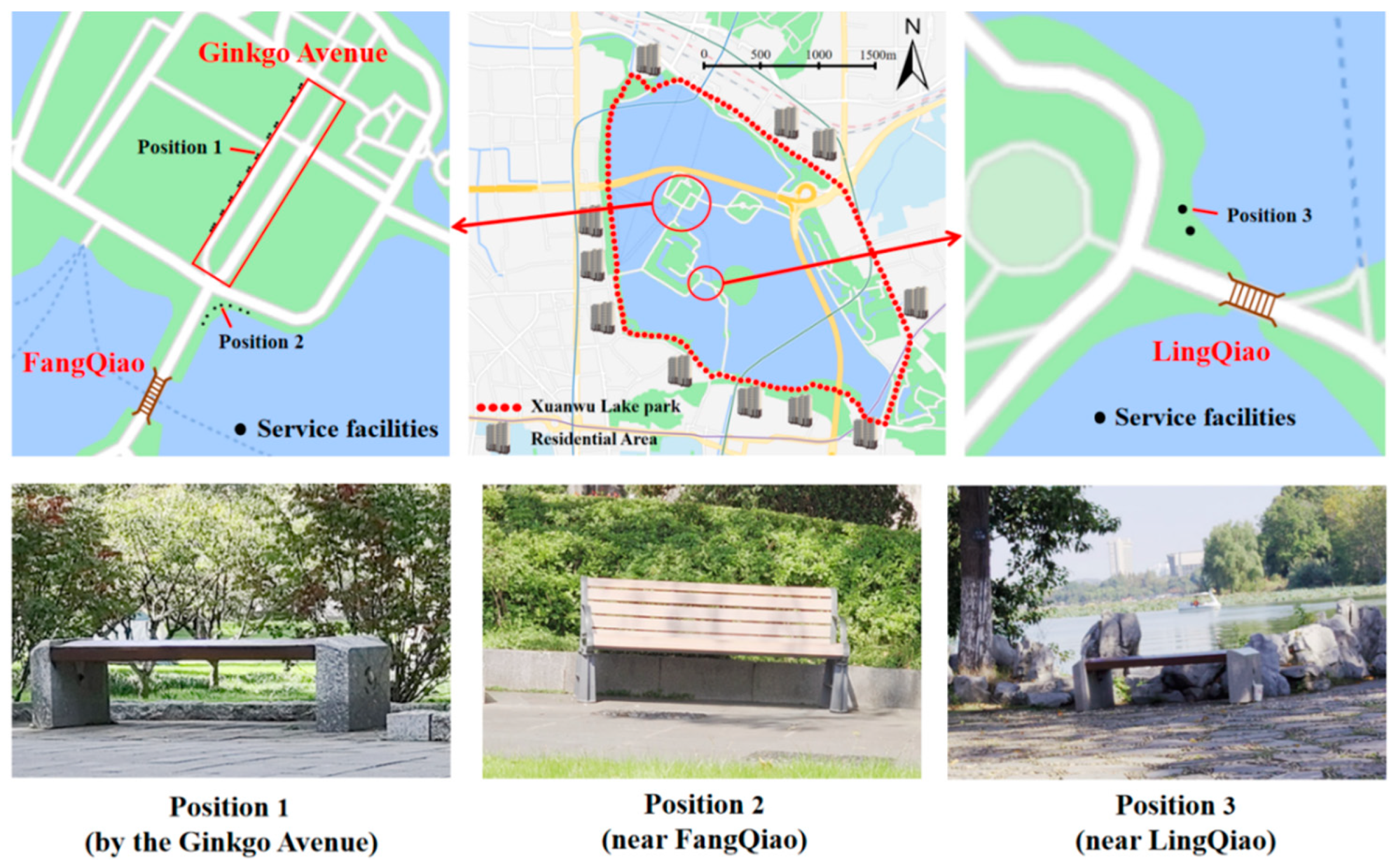
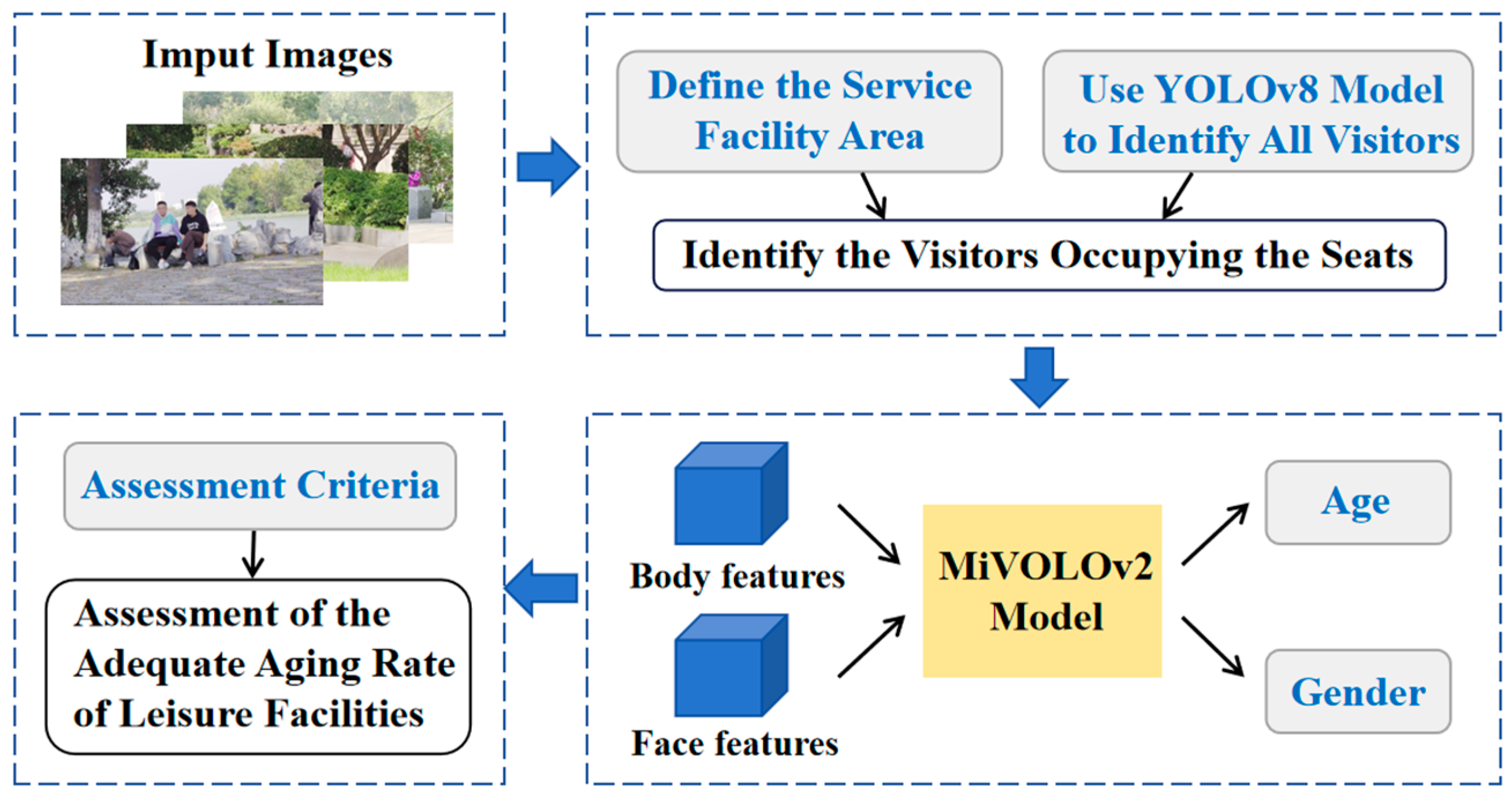
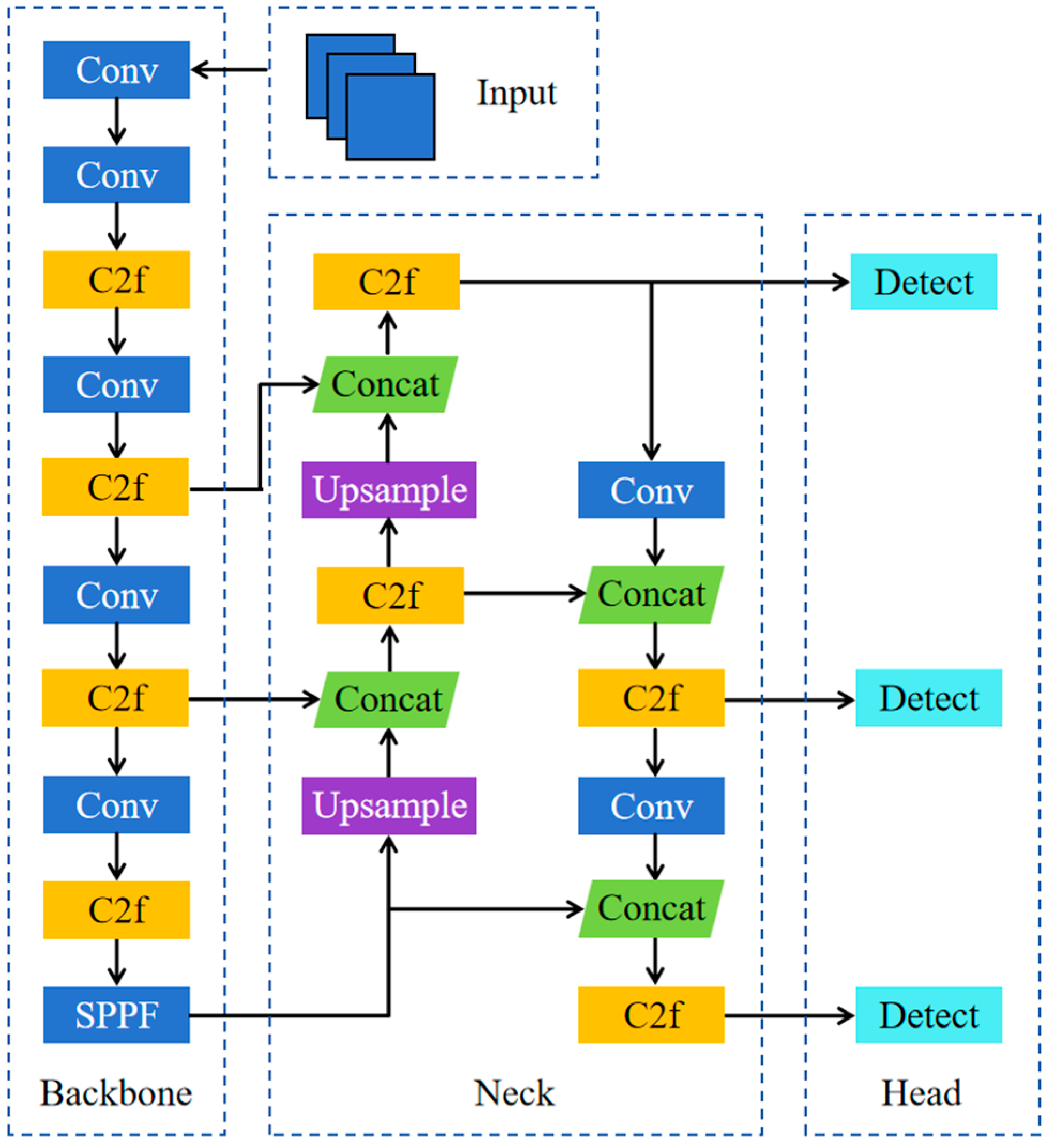
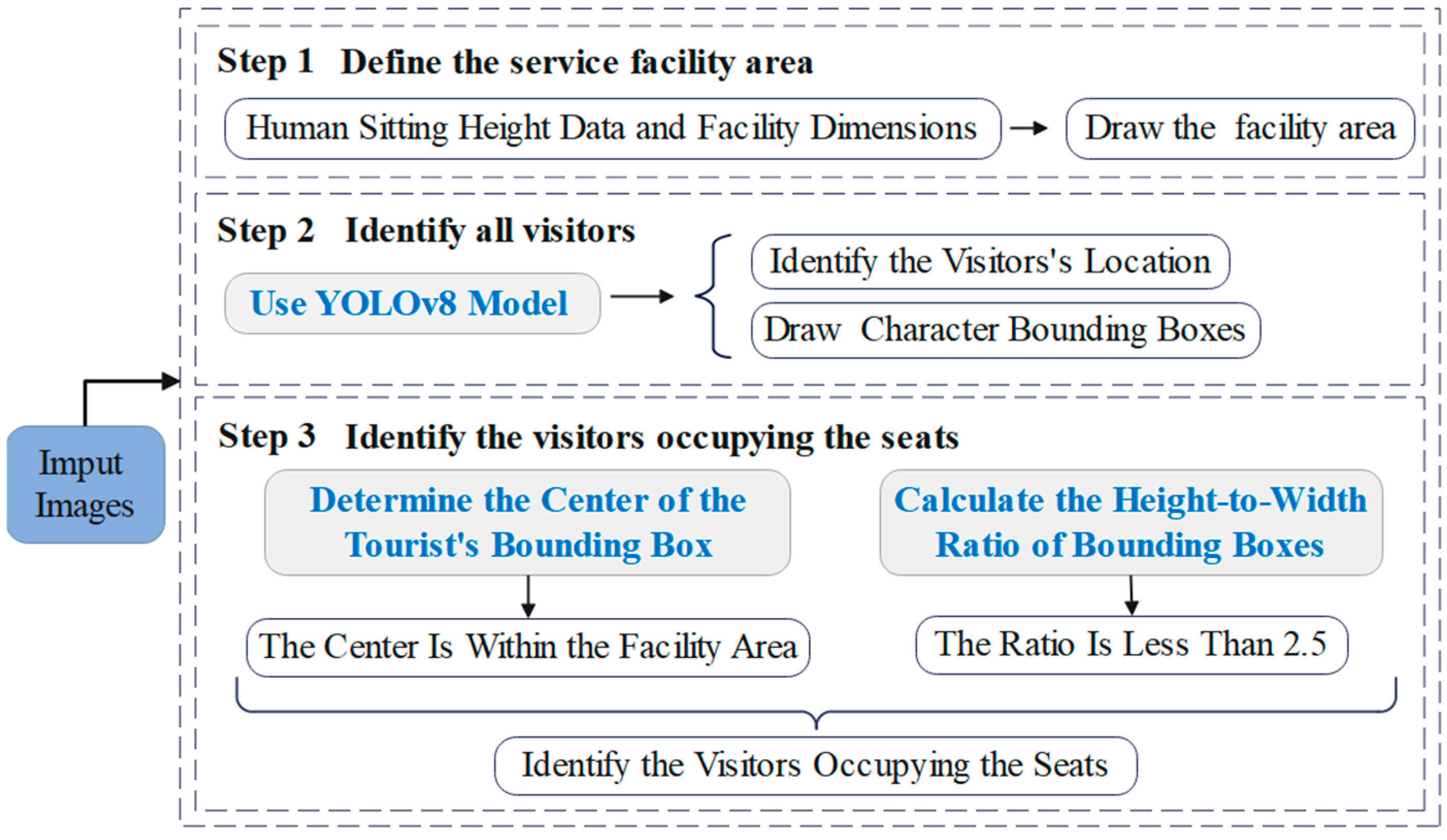


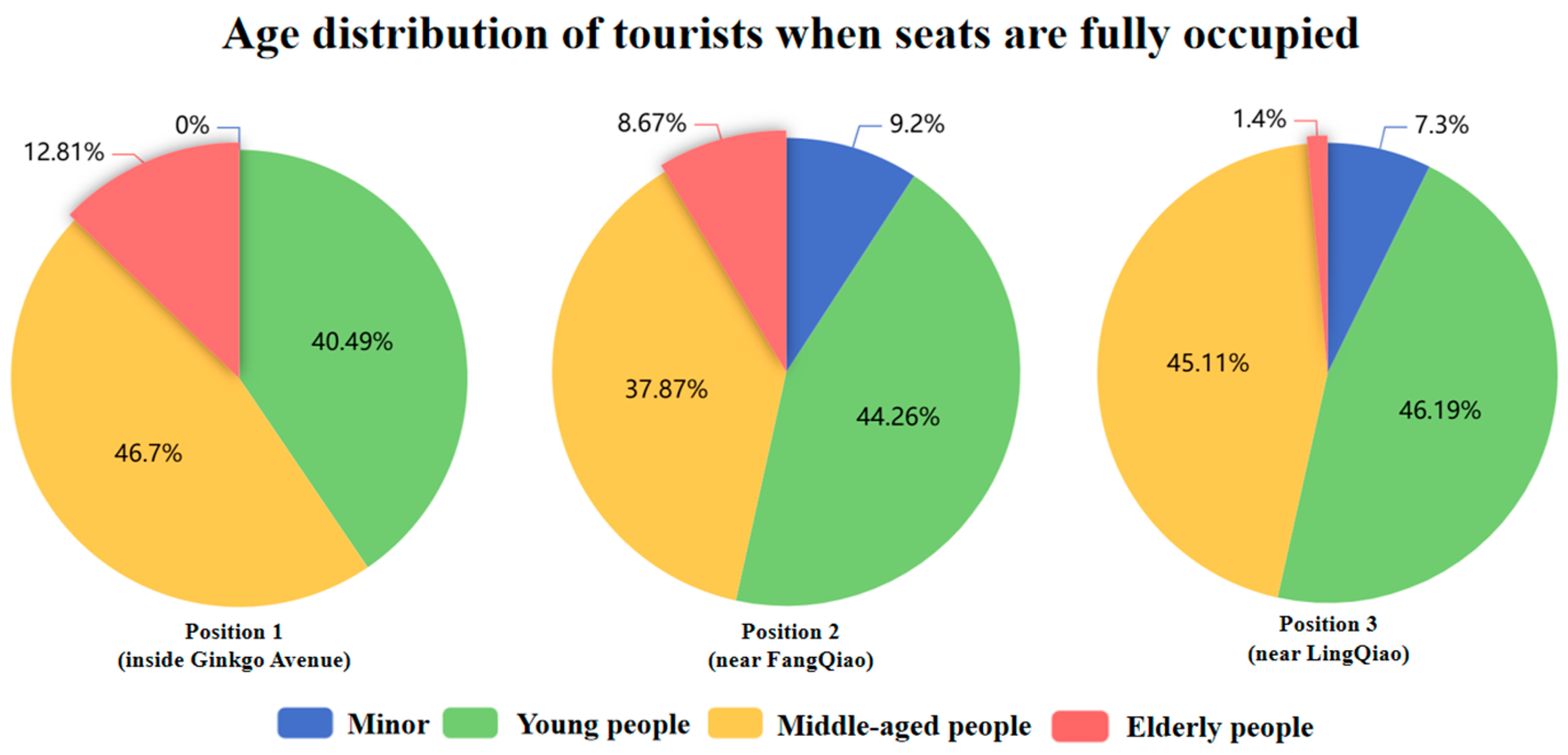
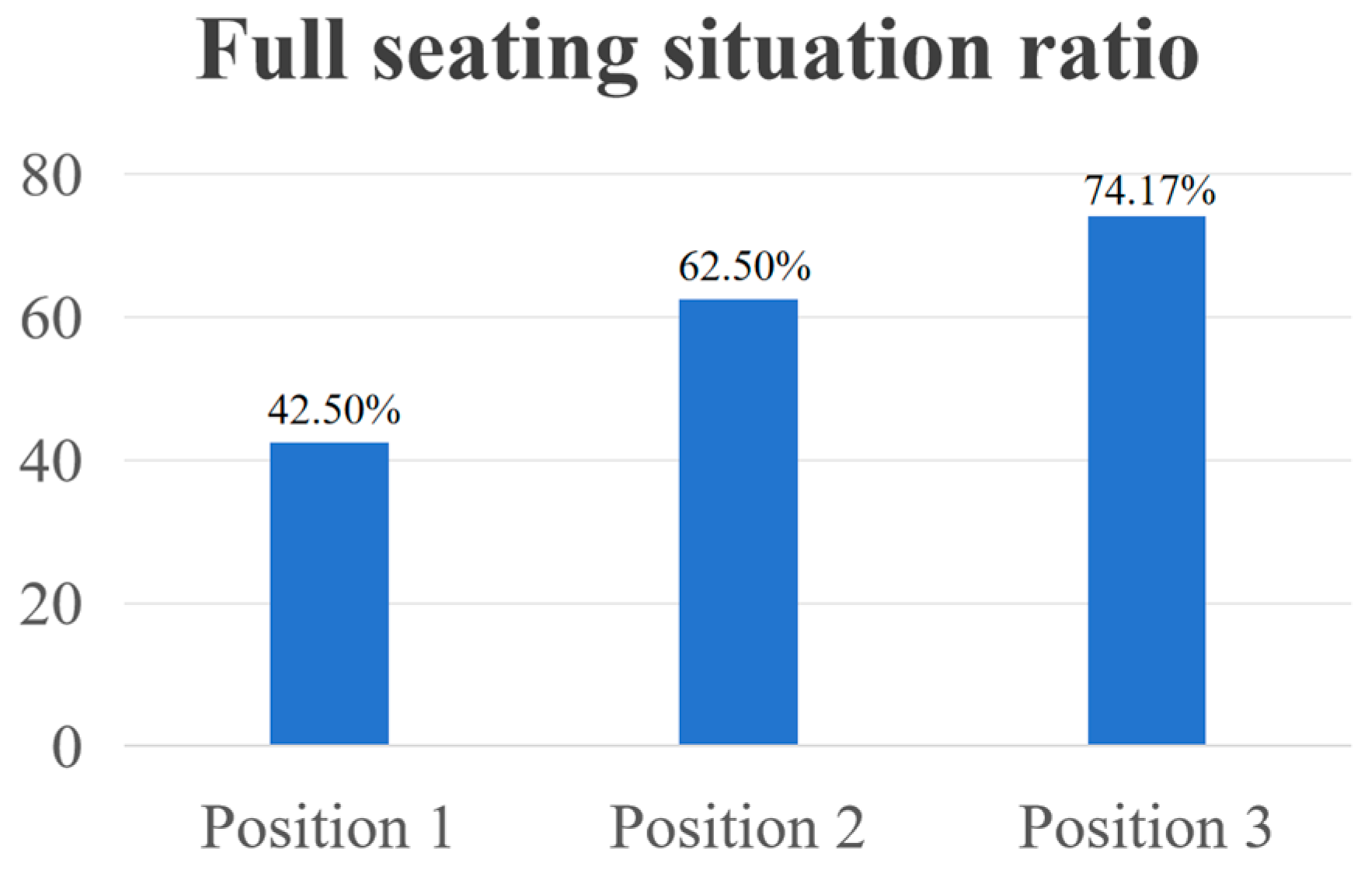
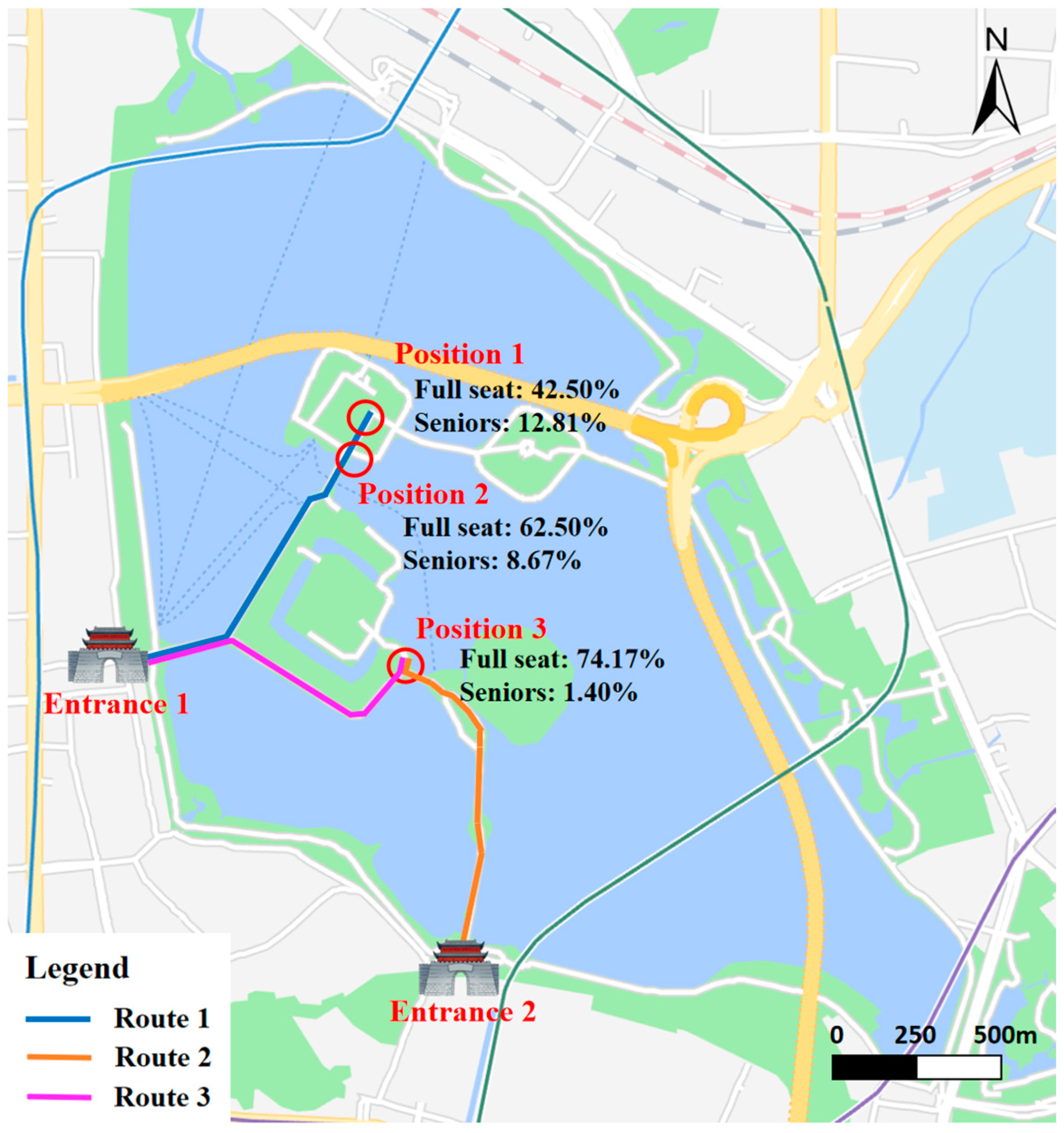
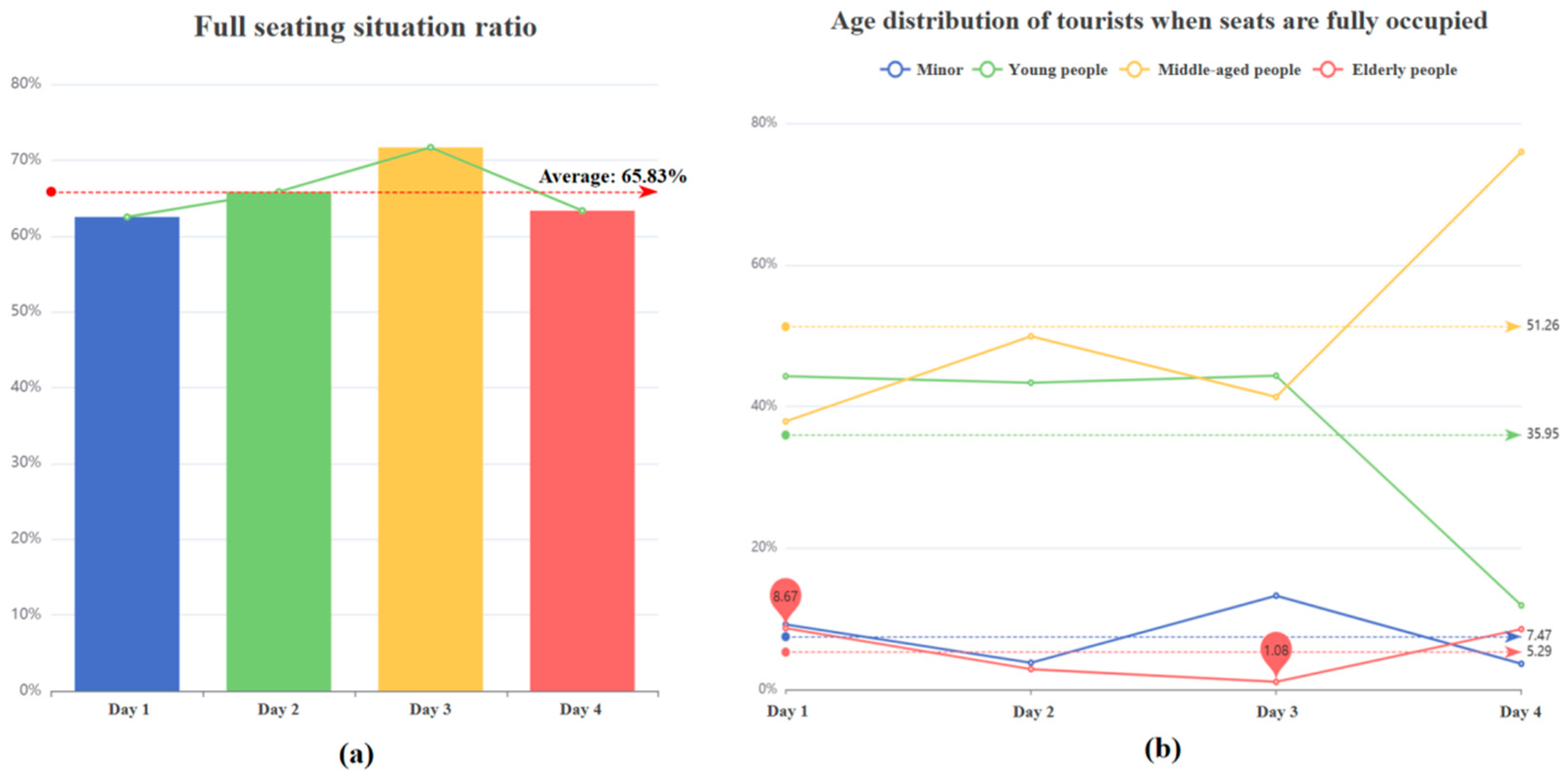

| Model | YOLOv8 | MiVOLOv2 | |
|---|---|---|---|
| Metric | |||
| Dataset Size | COCO dataset (covering 80 classes) | IMDB-Clean dataset (183,886 training images, 45,971 validation images, and 56,086 test images) | |
| Batch Size | 16 | 192 | |
| Epoch | 100 | 220 (face) + 400 (body) | |
| Learning rate | 0.01 | 1.5 × 10−5 (face), 1 × 10−5 (body) | |
| mAP | 37.3 | - | |
| MAE | - | 4.24 | |
| Gender | Age Range | Average Body Width | Age Range | Average Body Width |
|---|---|---|---|---|
| Male | 4–6 | 304 | 18–25 | 448 |
| 7–10 | 340 | 26–35 | 454 | |
| 11–12 | 380 | 36–60 | 449 | |
| 13–15 | 417 | ≥61 | 440 | |
| 16–17 | 439 | |||
| Female | 4–6 | 296 | 18–25 | 400 |
| 7–10 | 330 | 26–35 | 406 | |
| 11–12 | 372 | 36–60 | 413 | |
| 13–15 | 404 | ≥61 | 409 |
| Evaluation Standard | Aging-Friendly Adequacy Rate |
|---|---|
| F < 30% | High |
| 30% ≤ F ≤ 70%, Y ≤ 90% | Relatively high |
| 30% ≤ F ≤ 70%, Y > 90% | Relatively low |
| F > 70% | Low |
Disclaimer/Publisher’s Note: The statements, opinions and data contained in all publications are solely those of the individual author(s) and contributor(s) and not of MDPI and/or the editor(s). MDPI and/or the editor(s) disclaim responsibility for any injury to people or property resulting from any ideas, methods, instructions or products referred to in the content. |
© 2025 by the authors. Licensee MDPI, Basel, Switzerland. This article is an open access article distributed under the terms and conditions of the Creative Commons Attribution (CC BY) license (https://creativecommons.org/licenses/by/4.0/).
Share and Cite
Dong, W.; Liu, S. Evaluating Age-Friendliness of Outdoor Service Facilities in Tourist Attractions: Evidence from Visual Computing Models. Appl. Sci. 2025, 15, 5343. https://doi.org/10.3390/app15105343
Dong W, Liu S. Evaluating Age-Friendliness of Outdoor Service Facilities in Tourist Attractions: Evidence from Visual Computing Models. Applied Sciences. 2025; 15(10):5343. https://doi.org/10.3390/app15105343
Chicago/Turabian StyleDong, Wenfei, and Shaojun Liu. 2025. "Evaluating Age-Friendliness of Outdoor Service Facilities in Tourist Attractions: Evidence from Visual Computing Models" Applied Sciences 15, no. 10: 5343. https://doi.org/10.3390/app15105343
APA StyleDong, W., & Liu, S. (2025). Evaluating Age-Friendliness of Outdoor Service Facilities in Tourist Attractions: Evidence from Visual Computing Models. Applied Sciences, 15(10), 5343. https://doi.org/10.3390/app15105343





